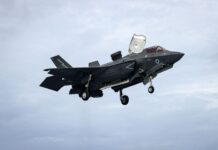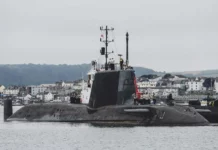![F-35Bs at sunset [Crown Copyright]](https://euro-sd.com/wp-content/uploads/2025/06/F-35Bs-at-sunset-Crown-Copyright.jpg)
UK releases ambitious Strategic Defence Review, as questions remain over affordability
Peter Felstead
The UK Ministry of Defence published its much-anticipated Strategic Defence Review on 2 June 2025. With high-intensity conflict having returned to Europe since the publication of the Integrated Defence Review in 2021 following Russia’s February 2022 invasion of Ukraine, the SDR consequently set out wide-ranging new measures and initiatives to adapt to the new military-geopolitical paradigm in Europe – and, indeed, the rest of the world. As always, however, questions remain as to whether the UK government’s commitment to increased UK defence spending is enough to make such new initiatives a reality.
In his introduction to the SDR, UK Prime Minister Sir Keir Starmer stated, “We are delivering our commitment to spend 2.5% of GDP on defence, accelerating it to 2027, and we have set the ambition to reach 3% in the next Parliament.” He added, however, that reaching 3% of GDP in defence spending would be “subject to economic and fiscal conditions”.

Stating of the SDR that the UK’s government and military leaders “strongly welcome this vision and direction”, Healey pledged that to achieve it the UK government “will Reform, Invest, and Act” and is “accepting all 62 recommendations in the SDR, which will be implemented”.
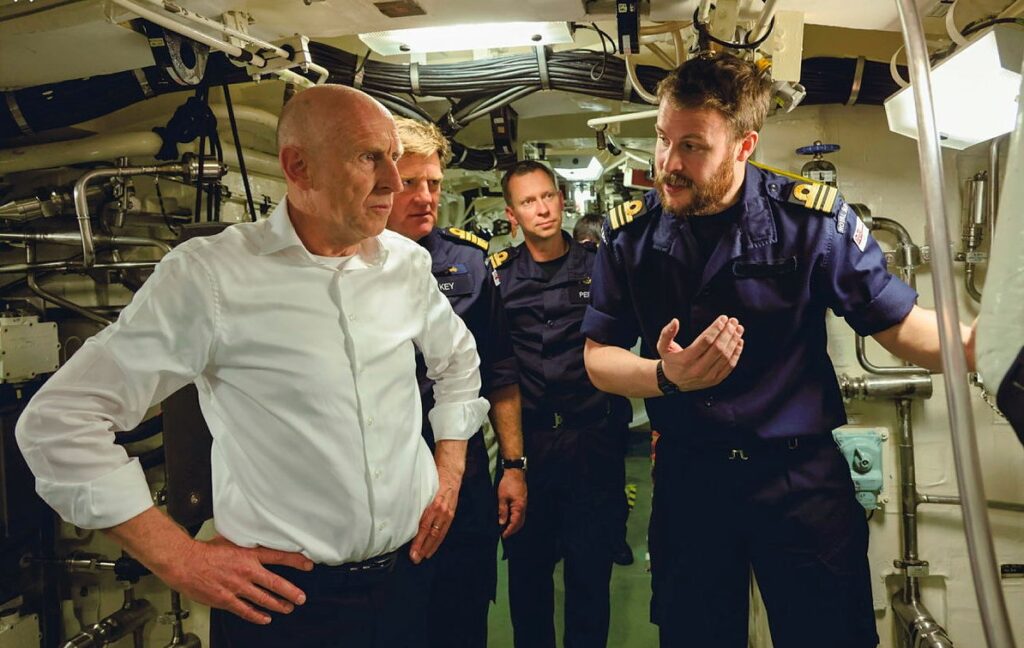
Adversaries
In terms of the threats facing the UK and its allies, the SDR presents Russia as “an immediate and pressing threat”. Russia’s full-scale invasion of Ukraine “makes unequivocally clear its willingness to use force to achieve its goals, as well as its intent to re-establish spheres of influence in its near-abroad and disrupt the international order to the UK and its allies’ disadvantage”, the SDR states. While conceding that the Ukraine conflict “has temporarily degraded Russian conventional land forces”, the review asserts that the “overall modernisation and expansion of its armed forces means it will pose an enduring threat in key areas such as space, cyberspace, information operations, undersea warfare, and chemical and biological weapons,” adding that “Russia’s war economy, if sustained, will enable it to rebuild its land capabilities more quickly in the event of a ceasefire in Ukraine”.
China, meanwhile, is categorised as “a sophisticated and persistent challenge” that is “increasingly leveraging its economic, technological, and military capabilities, seeking to establish dominance in the Indo-Pacific, erode US influence, and put pressure on the rules-based international order”. The SDR further notes that China “has also embarked on large-scale, extraordinarily rapid military modernisation across its forces” that includes: “a vast increase in advanced platforms and weapons systems, such as space warfare capabilities”; “the unprecedented diversification and growth of its conventional and nuclear missile forces, with missiles that can reach the UK and Europe”; and “more types and greater numbers of nuclear weapons than ever before, with its arsenal expected to double to 1,000 nuclear warheads by 2030”.
Iran and the Democratic People’s Republic of Korea (DPRK) are categorised as “regional disruptors”, asserting that Iran “will continue to conduct destabilising activities across the region, including sponsoring proxies and partners such as Hamas, Hezbollah, the Houthis, and Iranian-aligned Iraqi militias”, with its escalating nuclear programme presenting a risk to international security and the global non-proliferation architecture, while the DPRK “will likely pursue further nuclear modernisation to guarantee regime survival and coerce its neighbours”. The SDR noted that both countries “are developing missile programmes with growing reach” and “continue to pose a direct threat to the UK in cyberspace”.
The review further notes that China and Russia “have deepened their relationship and there will continue to be grounds for both strategic and opportunistic alignment with Iran and the DPRK”.
Allies
Part of the problem with penning a strategic defence review is that the strategies and relationships it lays out must transcend the vagiaries of political change in other countries. The United States under President Donald Trump, for example, is nothing like as closely aligned with the UK on Ukraine as the previous Biden Administration was. Thus, while the SDR still cites the United States as “the UK’s closest defence and security ally”, it nevertheless goes on to state that “Greater political and military leadership by European Allies within NATO is the best way to meet the challenge posed by Russia.”
The review further notes that “bilateral agreements with Allies in Europe are a particularly powerful tool” and cites agreements and treaties that the UK has with France, Germany, Poland, Norway, Italy and Turkey.
The SDR also points to particular international collaborative efforts in which the UK is involved – the trilaterial AUKUS strategic partnership with Australia and the United States and the Global Combat Air Programme (GCAP) that brings the UK together with Italy and Japan – as “flagship examples of capability partnerships that strengthen allies and collective security in both the Euro-Atlantic and Indo-Pacific”.
With regard to support for Ukraine as it attempts to fight off the Russian invasion, the SDR refers to the situation as a “once-in-a-generation inflection point for collective security in Europe”, noting that “securing a durable political settlement in Ukraine that safeguards its sovereignty, territorial integrity, and future security is essential to deter Russia from further aggression across the region”.
Capabilities
To meet the UK’s future security challenges, the SDR sets out to “transform the armed forces, restore their readiness to fight, and reverse the ‘hollowing out’ of foundational capabilities without which they cannot endure in protracted, high-intensity conflict”. The aim, the review says, is to create “an Integrated Force that is more lethal than the sum of its parts and skilled in warfare in different forms”. An immediate priority in this regard, the review states, “should be a shift towards greater use of autonomy and artificial intelligence (AI) within the UK’s conventional forces”.
The UK’s nuclear deterrent
Noting that the Nuclear Non-Proliferation Treaty (NPT), as the cornerstone of the non-proliferation and disarmament regime and the only credible route to universal nuclear disarmament, “is now under strain”, the SDR reasserts the UK’s commitment to maintaining “a minimum, credible, independent UK nuclear deterrent, assigned to the defence of NATO”, in the form of the UK’s Continuous At Sea Deterrent (CASD). Currently performed by four Vanguard-class nuclear-powered ballistic missiles submarines (SSBNs), the CASD will be renewed from the early 2030s with the entry into service of a new fleet of four Dreadnaught-class SSBNs.
The UK’s nuclear deterrent will also be further enhanced by the continued pursuit of a sovereign warhead programme to replace the UK’s current Trident D5 submarine-launched ballistic missiles, with GBP 15 billion (EUR billion) allocated during this parliament in pursuit of the effort.
However, the SDR argues that Russia’s increasing reliance on nuclear coercion “will be the central challenge for the UK and its NATO allies in the coming decades” and notes that Russia is modernising and expanding an extensive set of nuclear capabilities that are designed for employment at multiple levels of warfare. To address this challenge, the SDR recommends that the UK must facilitate greater coherence between conventional and nuclear components of NATO’s deterrence and defence posture, “commencing discussions with the United States and NATO on the potential benefits and feasibility of enhanced UK participation in NATO’s nuclear mission”.
On nuclear-powered submarine building, the SDR recommends that, “to avoid the costs of the past, the government must commit to not extending the life of the Dreadnought-class submarines beyond their intended end-of-service dates from the mid-2050s” and “should start to define the requirement for the post-Dreadnought nuclear deterrent within this Parliament”. The review also says the UK government should confirm the intended numbers of future UK nuclear-powered attack submarines (SSNs), including the next-generation SSNs to be built under the AUKUS partnership, “as soon as possible to provide the necessary assumptions for the required build capacity and tempo”. The SDR notes that the UK could potentially build “up to 12 conventionally armed, nuclear-powered attack submarines through the AUKUS programme”.
The maritime domain
Noting that the Royal Navy must be prepared to address newly emerging realities, including threats to undersea infrastructure and the effects brought about by climate change such as the increased importance of the High North, the SDR says the Royal Navy must move towards “a dynamic mix of crewed, uncrewed, and increasingly autonomous surface and sub-surface vessels and aircraft” while “developing next-generation capabilities such as SSN attack submarines via the trilateral AUKUS partnership”.
Somewhat contradictingly, the SDR asserts that the navy “must continue to move towards a more powerful but cheaper and simpler fleet”. Thus, while looking to bring into service some more complex systems, such ‘hybrid’ carrier air wings that feature crewed F-35B Lightning Joint Strike Fighters alongside autonomous collaborative platforms, the SDR suggests cheaper maritime solutions in other areas, such as the commercial vessels and burden-sharing with NATO allies to augment the Royal Fleet Auxiliary’s Fleet Solid Support ships in non-contested environments. The review also assumes that, as complex systems become easier to operate with a smaller training burden, the Royal Navy should be able to “adjust its personnel balance to include greater numbers of reservists to generate efficiencies and release regulars for front-line operational roles”.
The SDR does, however, recommit to the Royal Navy’s amphibious warfare capabilities, stating, “Amphibious advance force operations remain a critical focus for the Royal Marines Commando Force, operating in some of the most extreme environments and offering political choice for action worldwide. These operations should increasingly focus on supporting NATO requirements, including integrating into the UK-led Strategic Reserve Corps when appropriate.”
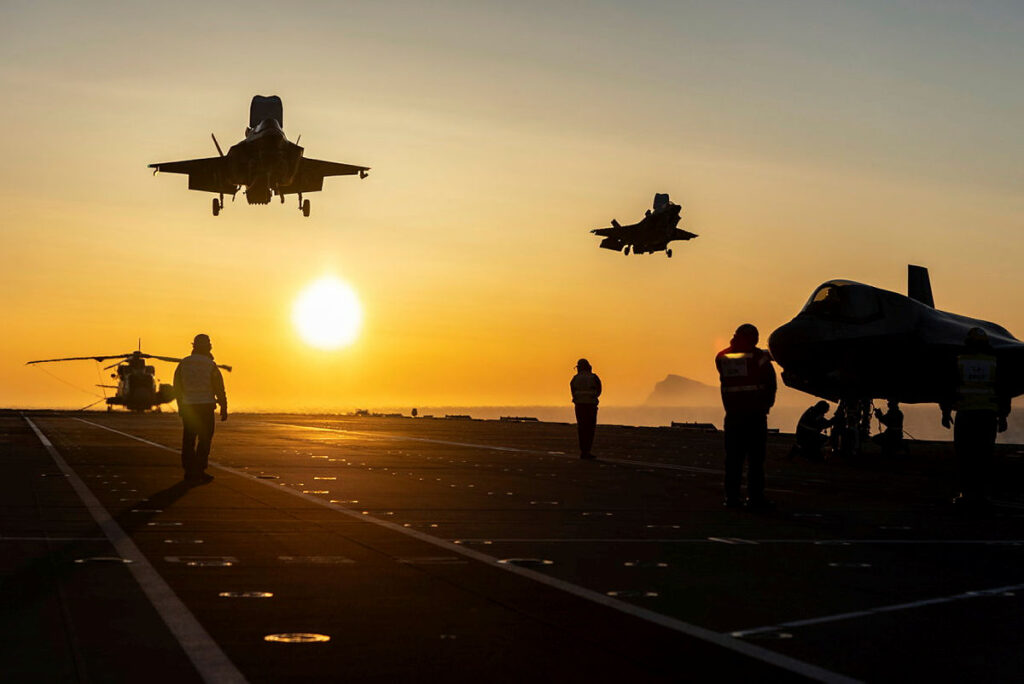
Acknowledging that the British Army “is in transition from the force required for the interventions of the post-Cold War era to a force ready to play its part in NATO’s ‘deterrence by denial’”, the SDR nevertheless asserts that the army “can deliver a ten-fold increase in lethality by harnessing precision firepower, surveillance technology, autonomy, digital connectivity, and data”. The review references Project Asgard: an initiative designed to enhance the UK’s reconnaissance and strike (recce strike) capabilities through a software-defined, network-enabled system.
Noting that autonomous and uncrewed land and aerial systems are now an essential component of land warfare, the SDR suggests that a ‘20-40-40’ force mix is likely to be necessary, involving “20% crewed platforms to control 40% ‘reusable’ platforms (such as drones and unmanned ground vehicles that survive repeated missions), and 40% ‘consumables’ such as rockets, shells, missiles, and ‘one-way effector’ drones”.
In its land domain recommendations the SDR says the army “must modernise the two divisions and the Corps HQ that it provides to NATO as one of the Alliance’s two Strategic Reserves Corps (SRCs)”, adding, “The SRC should be led by the Corps HQ (Allied Rapid Reaction Corps) and enabled by, and command, Corps-level capability. The first division should comprise a fully deployable Headquarters, three manoeuvre brigades with armoured and mechanised capabilities, support brigade, and associated enablers. Planning should include the integration of the Royal Marines Commando Force into the SRC when appropriate.”
In terms of manpower, the review says the British Army “must evolve its mix of regulars and reserves, with a minimum of 100,000 soldiers, of which 73,000 are regular”. It adds that small uplift in regular personnel should be considered when funding allows, while adding that a proposed 20% increase in active reserve numbers should also benefit the army.
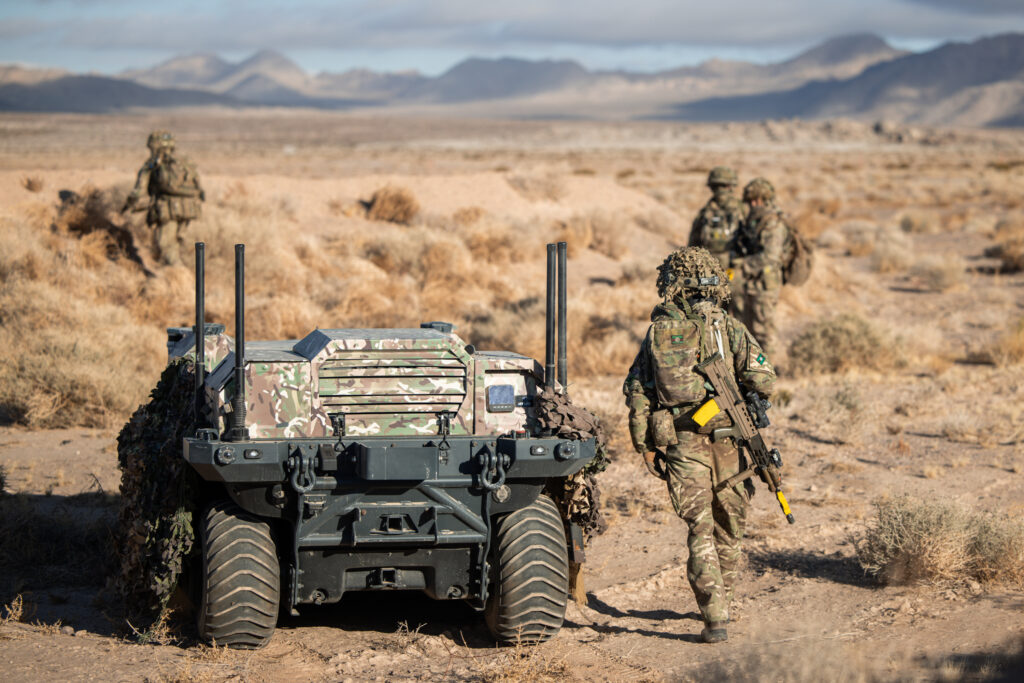
Among its other recommendations for the British Army, the SDR states that a global crisis response capability, held at very high readiness in the land domain, should be led by 16 Air Assault Brigade. While the review advocates for the retention of a UK airborne parachute capability, it states that such a capacity “should remain focused on specialists and a single battalion group”.
The air domain
The Royal Air Force (RAF), states the review, “offers the Integrated Force’s quickest means of striking targets, with the flexibility, speed, and reach to deliver effect globally”. It adds, however, that the RAF’s “lean size reflects the requirements of a post-Cold War era, centred on counter-terrorism, counter-insurgency, and air policing”, whereas, with the return of high-intensity conflict to Europe, the RAF “must improve its productivity, agility, and adaptability to build greater readiness and resilience”.
While the SDR acknowledges the RAF as the lead UK command for integrated air and missile defence (IAMD), its assertion that the RAF combat air force “provides the core of UK IAMD ‘effect’ capability, with Typhoon and F-35 providing the UK and NATO with air defence against air and cruise missile attack”, would seem to be somewhat inadequate. Noticeably absent is any direct discussion of developing ground-based IAMD effectors, the need for which is only going to grow as the threat from hypersonic weapons continues to increase. That said, however, any comprehensive ground-based IAMD ‘umbrella’ will necessarily be a Europe-wide endeavour and not a requirement that can be addressed by the UK on its own.
Perhaps more than any other part of the SDR, the air domain section provides the most specific recommendations with regard to procurement initiatives, which include:
- The consideration of investment in autonomous collaborative platforms (ACPs) should be considered alongside the Future Combat Air System and Global Combat Air Programme;
- The procurement of more F-35s over the next decade, which could include conventional take-off and landing (CTOL) F-35As in addition to the short take-off/vertical landing (STOVL) F-35Bs that the RAF and Royal Navy already operate. In combination with the SDR recommending that the UK commence “discussions with the United States and NATO on the potential benefits and feasibility of enhanced UK participation in NATO’s nuclear mission”, this suggests that the UK could, like Germany, procure F-35As and offer them as potential carriers of US-supplied B61 freefall variable-yield nuclear bombs, but the SDR does not explicitly state this;
- The procurement of more E-7 Wedgetail airborne early warning and control (AEW&C) aircraft “when funding allows” (the UK had originally planned to buy five E-7 Wedgetails, but in the 2021 Integrated Defence Review cut this to three airframes, which many have suggested would prove to be an inadequately sized fleet);
- Exploring providing the RAF’s Protector RG1 (MQ-9B) medium-altitude, long-endurance unmanned aerial vehicles with a maritime surveillance capability;
- Augmenting the RAF’s existing fleet of A400M airlifters with either more A400Ms, civilian charter aircraft and/or sponsored service options.
- Replacement of the RAF’s Hawk T1 and T2 jet trainers with a new advanced jet trainer capability.
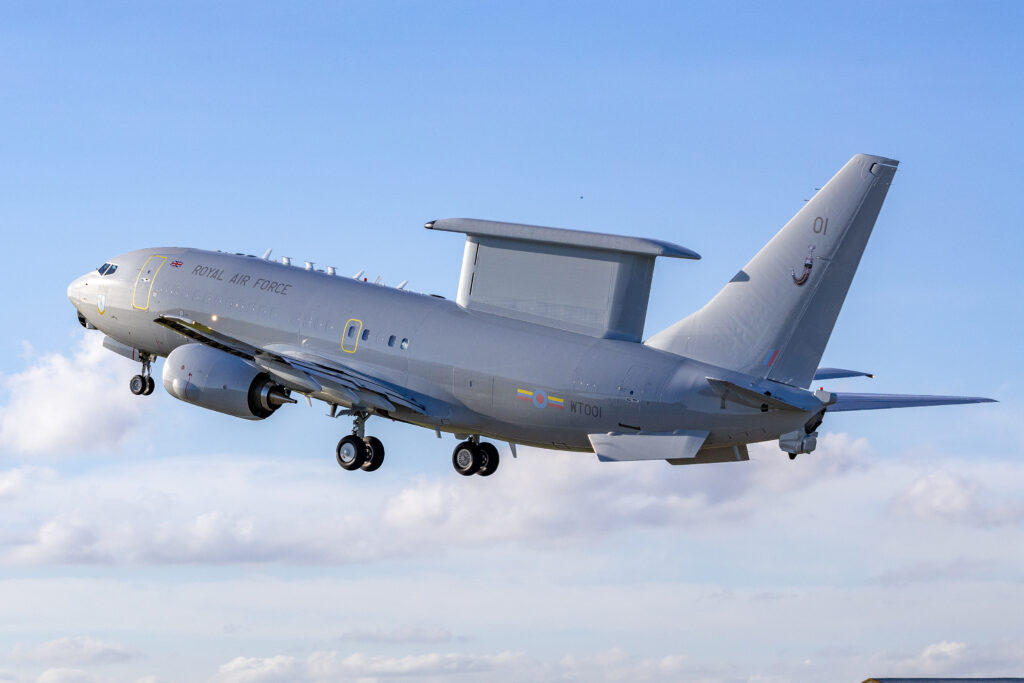
The SDR acknowledges space as “a critical national infrastructure sector, a site of growing competition, and a domain that is central to warfighting”, noting that nearly 20% of national GDP is reliant on satellite services and that disruption to GPS would cost the UK economy an estimated GBP 1 billion (EUR 1.2 billion) a day.
The review also noted that, while space is critical to the ability of the UK’s Integrated Force to understand, communicate, move, and fight, as a domain it is increasingly becoming congested and contested, with the combined operational satellite fleets of China and Russia growing by 70% in 2019–21. Furthermore, both countries have sought to weaponise space, the review points out, “demonstrating the capability and the will to use sophisticated anti-satellite weapons in all orbital regimes”.
In its recommendations, the SDR says the MoD “should invest in the resilience of UK military space systems with a focus on space control, decision advantage, and capabilities that support the ‘Understand’ and ‘Strike’ functions”, as well as regularly reviewing its Skynet satellite communications capabilities to ensure they remain resilient and operationally relevant.
The review also recommends that, in support of Euro-Atlantic IAMD efforts, the MoD “should seek partners to develop a next-generation, overhead, persistent intelligence, surveillance and reconnaissance capability”.
The cyber and electromagnetic domain
Noting that the cyber and electromagnetic (CyberEM) domain is at the heart of modern warfare, the SDR warns that the UK armed forces’ ability to fight “is highly dependent on access to the electromagnetic spectrum and resilience to digital service loss” and that “achieving precision and lethality in all domains, at scale and reach, relies on winning the CyberEM contest”.
To achieve this the SDR proposes the creation of a new CyberEM Command as part of UK Strategic Command that would act as a hub, integrating the UK’s full range of military operations across the CyberEM domain. The review proposes that the MoD should establish an initial operating capability for a new CyberEM Command within UK Strategic Command, with a workforce of mainly civilians and reserves planned and developed as part of a newly established Digital Warfighter group, by the end of 2025.
Expanding the UK’s munitions capabilities
To address the UK’s deficiencies regarding the timely production of munitions – a Europe-wide issues exposed by the high-intensity conflict in Ukraine – the UK “will build at least six new munitions and energetics factories and thousands more long-range weapons to strengthen Britain’s Armed Forces and create new jobs across the country” the UK MoD announced on the eve of the SDR’s publication.
The munitions initiative, which involves a GBP 1.5 billion government investment, is in response to the SDR recommending the creation of an ‘always on’ munitions production capacity in the UK, allowing production to be scaled up at speed whenever that is needed. The investment is expected to back the generation of around 1,800 highly skilled jobs across the UK.
“Taking the lessons from Ukraine which shows that our military is only as strong as the industry that stands behind it, the measures will boost British jobs while improving the warfighting readiness of both British armed forces and industry,” the MoD stated. “The additional funding will see UK munitions spend hit GBP 6 billion this Parliament.”
The MoD noted that it will procure “up to 7,000 UK-built long-range weapons”, but did not specifically say what these would be. One long-range weapon system that could be bought off the shelf is the MBDA-produced Storm Shadow cruise missile, which has been provided to Ukraine by the UK. Meanwhile, the Storm Shadow’s successor, the Future Cruise/Anti-Ship Weapon (FC/ASW), which can be air or surface launched, completed key assessment phase activities in 2024, but is unlikely to enter service before the late 2020s.












